Autonomous mobile robots (AMRs) can make a huge difference in your warehouse or in your industrial facility. With these smart pieces of equipment, you can unlock a wealth of important benefits, including reduced costs, better throughput, and enhanced safety.
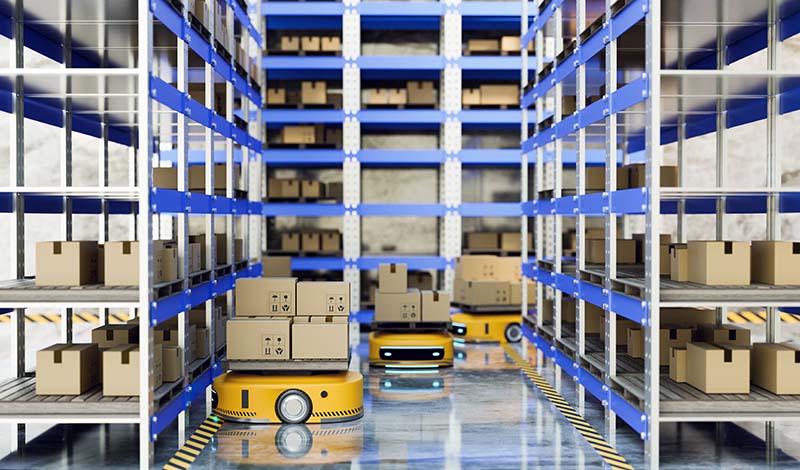
An autonomous mobile robot (AMR) is a robot that can understand and move through its environment without human intervention. AMRs are becoming increasingly popular in a variety of industries, as they offer many benefits over traditional methods of operation. One key advantage of AMRs is their increased flexibility.
Unlike stationary robots, which are limited to a single task or range of motion, AMRs can be deployed to handle a variety of tasks and navigate through even the most dynamic environments.
This flexibility can lead to increased efficiency and productivity gains, as well as reduced costs. In addition, AMRs can improve safety by reducing the need for human workers to enter danger zones. As the technology continues to develop, it is likely that autonomous mobile robots will play an increasingly important role in warehousing and distribution operations.
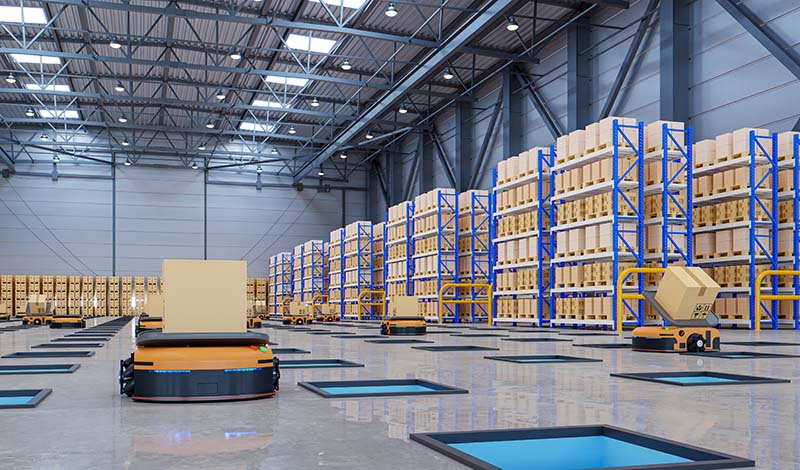
AMR stands for autonomous mobile robot — and in fact, this is a pretty good description of what the solution is. It requires no human input as it goes about its tasks (autonomous). It is able to move around warehouses and distribution facilities while avoiding obstacles with ease (mobile). It is an artificial automaton (robot).
The AMR is a critical asset in today’s warehousing and distribution fields. Many of the processes in this industry have typically been handled by human operators, but this has led to poor health and safety, low levels of efficiency, and numerous errors, simply because humans are not designed to complete repetitive tasks for an extended period of time.
Robotic and automated solutions, on the other hand, are well suited to this. These solutions are able to handle tasks that humans struggle with, dramatically increasing efficiency and productivity while using sensors to gain a real-time picture of their operating environment. As autonomous technology advances further, these pieces of equipment are growing ever more important to the warehousing, distribution, and logistics industries.
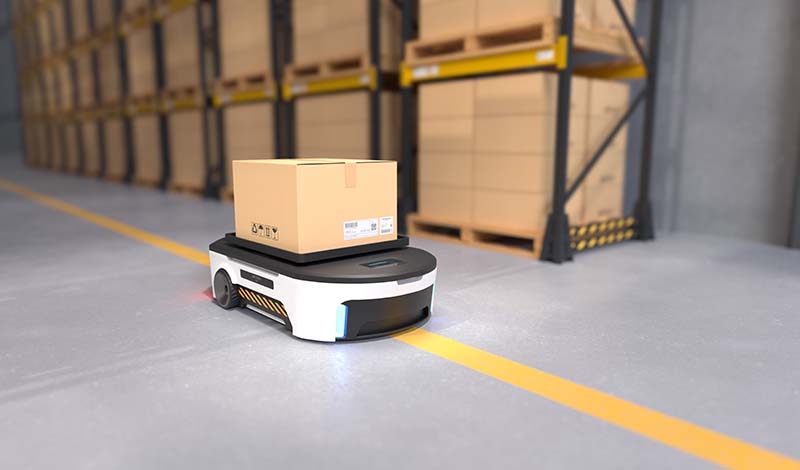
AMR robots are often discussed in the same breath as automated guided vehicles AGVs, and with good reason. Both of these solutions are automated devices that move around the warehouse space with little to no human input, executing tasks in an effective and reliable manner. However, there are key underlying differences.
These vehicles are based on a similar robotic platform to AMRs, but they are not wholly autonomous. Instead, they follow guide marks that are built into the floor of the facility. While AMRs will get to know their surroundings, navigating obstacles through a combination of sensors, data processing, and machine learning functionality, AGVs will not.
Instead, automated guided vehicles will need a track or path to be mapped out for them ahead of time, usually by a human operator. AGVs may sometimes be known as autonomous guided vehicles, but this term is somewhat inaccurate.
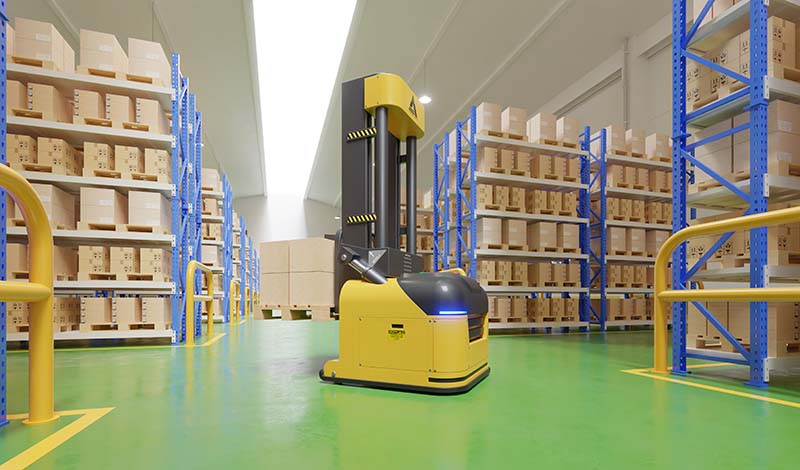
One of the main business cases for the adoption of AMRs is the increase in efficiency these solutions provide. But how is this done? How do mobile robots like AMRs boost efficiency on the warehouse floor?
1
When human personnel move from A to B, they take the route that is familiar to them. This won’t always be the fastest or most direct route. AMRs utilize the robots’ built-in software to identify the optimal route between points, avoiding obstacles and decreasing the time taken to arrive at the destination.
2
Automating material handling essentially means stopping many of the most common mistakes associated with this process. Many material handling tasks are highly repetitive, which can be problematic in terms of manual handling — human teams may lose focus and concentration, leading to repeated errors over time. AMRs do not experience this issue and can almost guarantee high precision even over longer periods of time.
3
AMRs are not about replacing human personnel but rather optimizing the way you use your teams. As discussed above, human operators are not so suited to repetitive tasks like order picking and packing but are equipped for creative, critical, and cognitive jobs within your facility. In this sense, AMRs increase deployment efficiency by freeing up valuable human resources for use elsewhere.
4
When you need to pick and pack a large order, you may find yourself dealing with a significant amount of data — product sizes, volumes, and specifications, for example.
Handling multiple orders increases data complexity further, leading to inefficient processes for human personnel. AMRs can handle complex datasets easily, enabling them to execute multiple picking tasks consecutively or even concurrently.
5
Warehousing and distribution organizations can handle a number of different tasks by deploying only one or two AMRs. These robots do not need much room in which to operate effectively, so facility managers can store more pieces of inventory within the warehouse space without compromising on safety and efficacy.
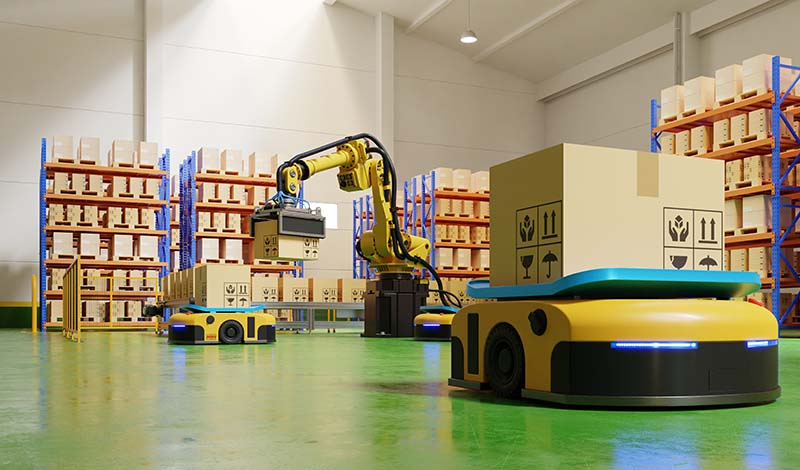
Efficiency aside, why deploy autonomous mobile robots in your facility? What other advantages can you expect from an AMR in action? Let’s take a look at this in a bit more detail.

There is a wide range of automated solutions designed to assist with warehousing operations. While an AMR is often considered to be one of these solutions, AMR is, in fact, a category in its own right, and there are a number of different robots under this umbrella. These include;
1
While all AMRs are transportation solutions in one way or another, some are designed specifically for moving objects and inventory around the warehouse floor. These AMRs may be more robust than other types and suitable for handling heavy loads or awkward cargo.
These robots may be particularly useful in boosting health and safety at a warehouse, eliminating the need for human personnel to handle potentially hazardous loads or enter dangerous areas of the warehouse floor.
2
The picking process needs material handling equipment that is focused on high efficiency. Once an order is placed, it needs to be prepared and released to the customer without delay and without error. This can give your facility a competitive edge while enhancing your reputation with your customers. AMRs can handle the repetitive tasks involved in picking with high accuracy, making a real difference in your warehouse.
3
Sortation AMRs and similar robots are required at various points along the supply chain. Basically, any process in which items need to be organized and separated can benefit from one of these autonomous devices. Just like with picking, the robots all but eliminate errors while significantly speeding up the sortation process.
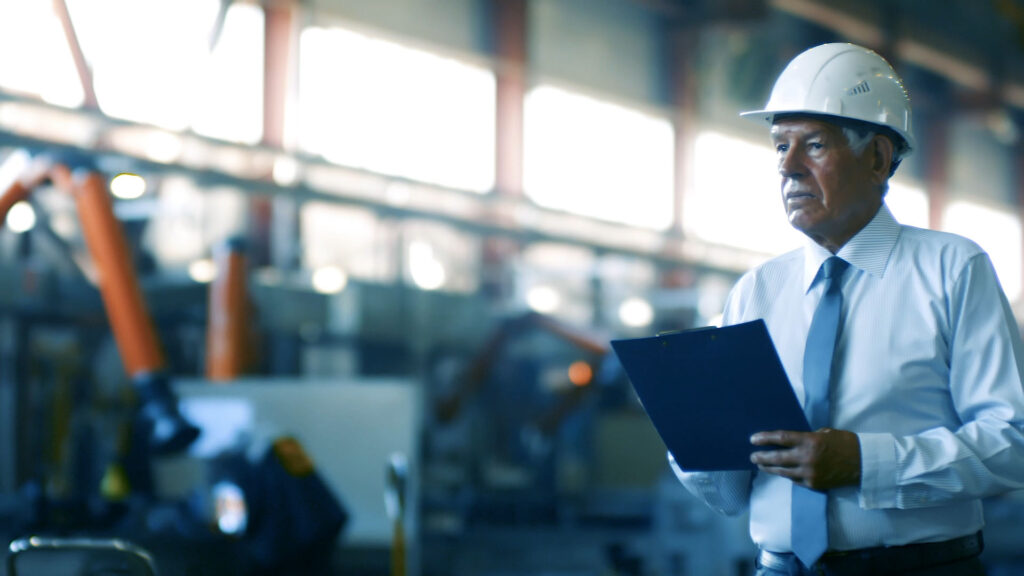
Here at PEC, we are proud to be one of the leaders in this field, providing autonomous mobile robots to clients across a range of different industries and use cases. We help our clients revolutionize their operations, achieving high levels of efficiency and safety while exceeding the expectations of partners and customers again and again.
To achieve this, we use a custom approach, getting to know you and the specifics of your project. This always begins with a consultation. To get started, reach out to our team today, and let’s chat about what we can do for you.
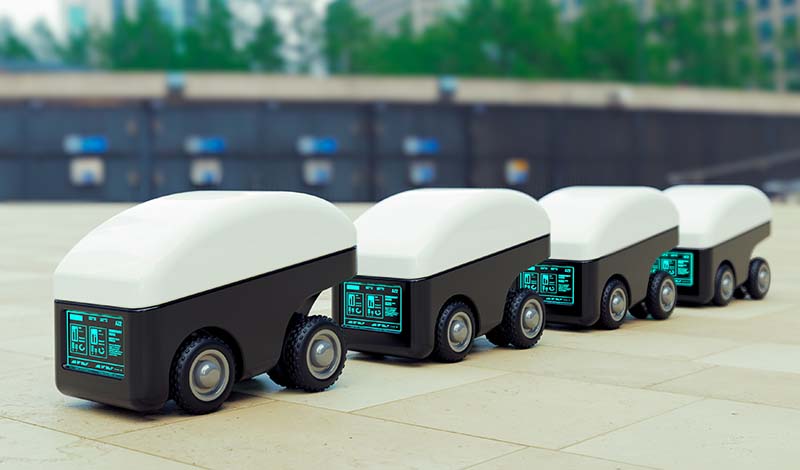
An autonomous mobile robot, or AMR, is an artificially intelligent piece of equipment. This equipment is designed to move around the working environment by itself, with no additional input required from human personnel. While these robots are similar to automatic guided vehicles (AGVs), AMRs are inherently different and rely more heavily on AI-based technology.
An AGV is guided — i.e., it moves around a track that has been laid out for it on the facility floor. Or it recognizes way markers and landmarks as it makes its way around the space. An AMR is not on a track — instead, it interprets its surroundings and makes decisions using its AI robot system.
It may be programmed to complete specific tasks. However, it will decide on the most efficient route for itself and may take other decisions based on its own understanding of the environment.
In this sense, an AMR is more sophisticated than an AGV, and so its purpose may be a little different. Businesses that simply need to transport items around the warehouse floor, completing repetitive tasks in a reliable manner, may be better suited to using an AGV.
However, businesses with more complex needs within the supply chain may benefit from the AMR form of warehouse automation.
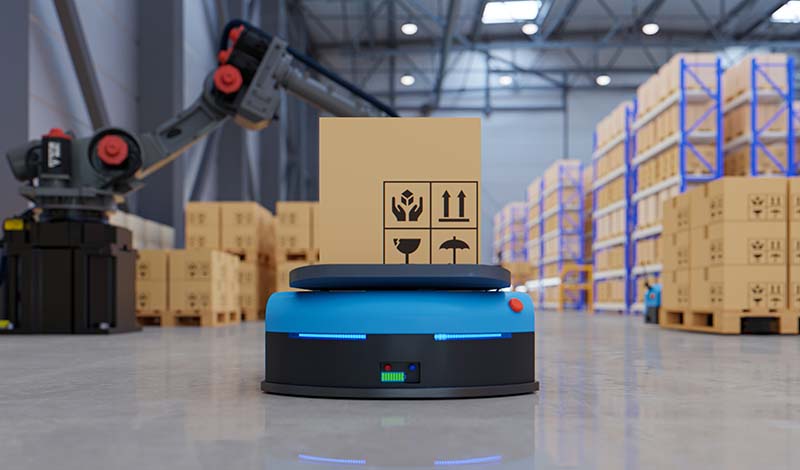
Human teams have moved goods around manually for centuries, so why the need for an autonomous mobile robot system? Take a look at some of the key reasons to choose an AMR rather than trying to manually move heavy loads:
1
AMRs can carry heavier loads than human personnel and are therefore better suited to moving materials, equipment, and other consignments. One AMR can do the job of several human personnel working together in a team, and the robotic option is more efficient than assisted lifting solutions like pulleys or pump trucks.
2
AMRs can operate around the clock without needing a break. This dramatically increases total throughput and operational hours. When integrated with warehouse automation systems, AMRs help facilities to run at a far higher capacity than they would otherwise be able to.
3
It can be dangerous to deploy human teams and machinery together on the facility floor. There is a significant risk of collision and injury, and it may be difficult to guarantee health and safety compliance. Even simply lifting heavy loads can be dangerous and can cause injury to personnel. AMRs help you to foster a far safer environment, removing many of these key dangers by removing the risk of collision or the chance of overexertion related to manual lifting.
4
AMRs are well suited to producing predictable results, again and again, over a long period. This is highly valuable in forecasting and planning for future operations. Reliability makes autonomous mobile robots very popular in warehousing, distribution centers, and other points along the supply chain, where delays at one point can impact operations elsewhere in the chain.
5
With autonomous mobile robots in place, there is less risk of valuable pieces of equipment or inventory becoming damaged. There is also less need for large human teams that can prove expensive to maintain. All this allows businesses to scale with ease without worrying about spiraling costs as a result of swift growth.
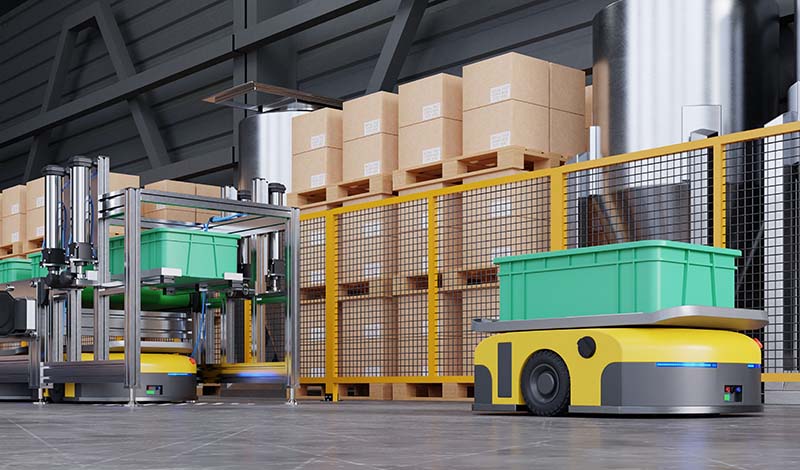
Autonomous mobile robots are an important part of warehouse automation, and utilizing these pieces of technology is certainly an important step on the way to the full adoption of automation and AI. But this idea of “a step” is important — AMRs represent a stepping stone toward a more efficient way of operating rather than a final objective.
So, how do AMRs fit into this wider warehouse automation landscape? How does AMR adoption help you to facilitate the next steps of your automation strategy? Let’s take a look.
1
AMRs are not designed to be implemented on their own. Instead, they are intended to integrate with other pieces of automated technology.
From overarching warehouse automation systems to automatic guided vehicles on the ground, AMRs work in harmony with a wide range of robotic technologies. This makes it easier for businesses to build their automated infrastructure.
2
You can’t make meaningful movements for your business if you are not flexible and agile. What’s more, you can’t be flexible and agile if you are struggling with age-old inefficiencies and points of friction. This is why so many businesses find themselves stuck.
AMRs can help you to avoid this dead-end. Instead, you’ll find yourself with more breathing space, helping you to achieve the flexibility you need to bring about profound changes.
3
Autonomous mobile robots can transform warehousing and other supply chain operations. This makes it far easier to adopt new modes of operation and new strategies. For instance, manufacturers can move toward a pull-focused, just-in-time strategy, enabling them to free up storage space and optimize productivity.
Distributors, on the other hand, can introduce swifter delivery channels and generate more revenue by offering premium-tier services. Automation sits at the heart of these strategies, accelerating processes and eliminating errors and mistakes.
With warehouse automation solutions in place, your business will be able to take advantage of changes in the market. They will help you seize opportunities when they arrive — and implementing AMRs is a significant move in the right direction.
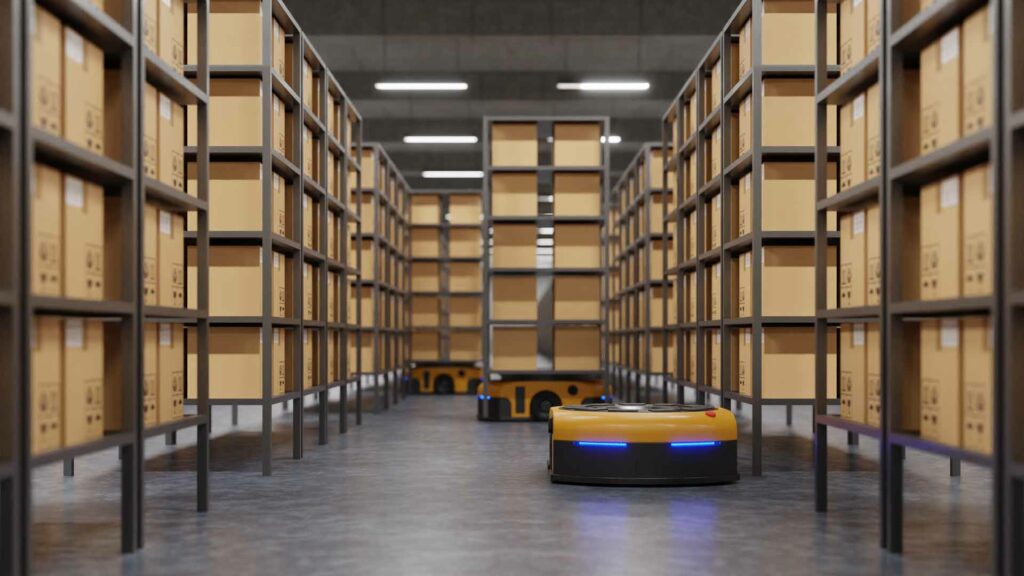
Automated mobile robots (AMRs) are drastically changing order fulfillment centers, allowing time-consuming order processing tasks to be completed with unprecedented speed and accuracy.
When integrated with machine learning and a warehouse management system, AMRs enable order fulfillment operations to operate within a cohesive system that provides precise performance data while improving customer satisfaction.
Further, the use of automated technology eliminates human error and inefficiency, resulting in increased efficiency and more effective order processing times. With the integration of automated technologies like AMRs, order fulfillment centers can expect faster turnaround, improved scalability, and greater customer faith in the process.
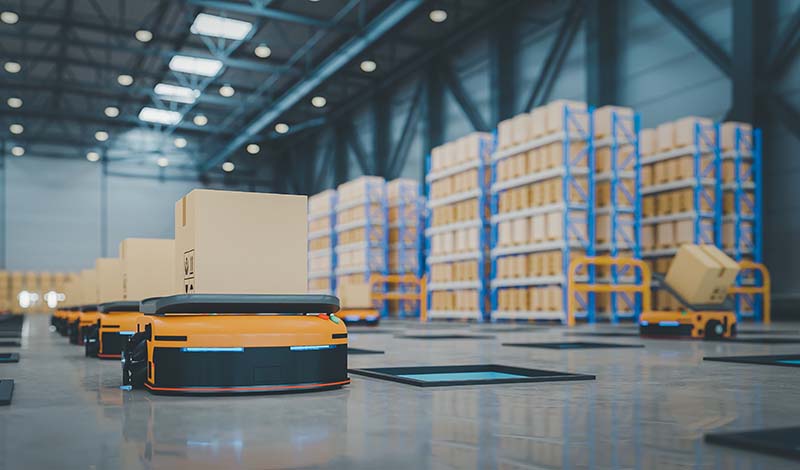
Wherever you operate in the supply chain, from manufacturing and warehousing through to distribution, PEC can help you benefit from autonomous mobile robot solutions. We are the experts in this space, and we have long-standing experience in this field — let us apply this expertise and experience to your next project.
We adopt a custom approach to your project, working with you and your team to understand your needs. From here, we can develop a tailor-made automation strategy that achieves your desired outcomes. Reach out today to schedule your consultation, and let’s get started.
Diverse Industries, One Trusted Partner
Safety means more than compliance; it’s our covenant with you.







Whether you’re coordinating your next project or proactively planning your plant maintenance, there’s no better time than right now to contact us.